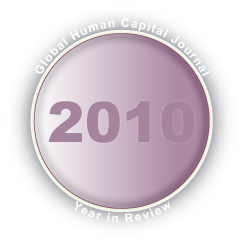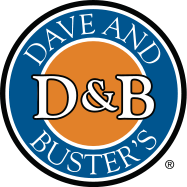 2011 Social Business Predictions and Recommendations describes current social business adoption and advices firms and people how to get ahead. 2011 Social Business Predictions and Recommendations describes current social business adoption and advices firms and people how to get ahead.
2011 will be remembered as the year “social media” fell by the wayside, strategy became a recognized prerequisite for serious efforts, and “social business” began displacing it in boardrooms’ mindshare. “Social media,” which usually tries to use social technologies to talk at people, has been the predominant “first use” of socialtech because marketing drives most social initiatives, and marketers “communicate,” i.e. push content, to their targets. When they “listen,” they use limited legacy processes such as focus groups, email marketing, data mining and online surveys. However, none of these scratch the real itch because they emphasize the company asking individuals structured questions; they don’t allow customer to customer interaction, which is ten times more illuminating because it is spontaneous and customer-centric.
Socialtech gets there, but marketers are ambivalent about it because it means a loss of control. And more profits and career growth for marketers, but they have to let go first. It’s a leap of faith, but […]
Web 3.0 and Social Business—2011 Predictions and Recommendations describes a turning point, away from social media to social business. SocialTech Grows Up—Relationship the Foundation of Business Success—Digital Clodhoppers Become Sore Thumbs.
 2011 will mark a turning point in the adoption of digital social technologies because the experimentation phase is drawing to a close, and stakeholder expectations are increasing. Organizations and people will no longer gain attention by executing badly. At the enterprise level, participation will wane in venues and initiatives that have no business strategy, focus, content strategy and commitment. Paying inexperienced people or agencies to “share” snappy content will expose brands as digital clodhoppers and push customers away. Individuals will also have to improve their game and focus on the most relevant people in their networks. Stop sending default invitations on LinkedIn. Proactively support people whom you respect and trust the most. The theme is determining and executing on strategy, focus and commitment. 2011 will mark a turning point in the adoption of digital social technologies because the experimentation phase is drawing to a close, and stakeholder expectations are increasing. Organizations and people will no longer gain attention by executing badly. At the enterprise level, participation will wane in venues and initiatives that have no business strategy, focus, content strategy and commitment. Paying inexperienced people or agencies to “share” snappy content will expose brands as digital clodhoppers and push customers away. Individuals will also have to improve their game and focus on the most relevant people in their networks. Stop sending default invitations on LinkedIn. Proactively support people whom you respect and trust the most. The theme is determining and executing on strategy, focus and commitment.
In 2011, the bar to attract and hold attention will be higher, which will present organizations with a new threat: when participation falls, some executives will conclude that […]
2010 Year In Review Initial Glimmers of Social Business is the Editor’s Choice of the Global Human Capital Journal—The Best Strategy, Tactics, Case Studies and Insights of 2010
 Compared to its progenitors 2009 and 2008, 2010 was a relatively calm year because the amplitude of market gyrations was clearly less, and businesses began to find a new floor on which to build stakeholder expectations. Although I watched with high interest the unfolding drama in Europe, I didn’t have the time to conduct the research necessary to do a rigorous interpretation. I did publish a reflection in January, which is not included in this year in review. However, 2010 marked a major turning point in the adoption of social technologies: the recognition that analysis and strategy were necessary to achieve consistent results with social initiatives. Compared to its progenitors 2009 and 2008, 2010 was a relatively calm year because the amplitude of market gyrations was clearly less, and businesses began to find a new floor on which to build stakeholder expectations. Although I watched with high interest the unfolding drama in Europe, I didn’t have the time to conduct the research necessary to do a rigorous interpretation. I did publish a reflection in January, which is not included in this year in review. However, 2010 marked a major turning point in the adoption of social technologies: the recognition that analysis and strategy were necessary to achieve consistent results with social initiatives.
2010 Macro trends
Social has been in adolescence up through 2009-2010 in which “being on Facebook” was an end in itself, agencies produced vapid content and little interaction happened because people won’t interact when brands are talking at them and not listening. People feel it when a […]
 Social Business Case Study: Jennifer DeMarco Herskind, Dave & Buster’s summarized how Dave & Buster’s was beginning to see results from their social media initiatives. She presented it at Alterian’s Social Business Engaging Times Summit. Social Business Case Study: Jennifer DeMarco Herskind, Dave & Buster’s summarized how Dave & Buster’s was beginning to see results from their social media initiatives. She presented it at Alterian’s Social Business Engaging Times Summit.
In the U.S., they have 57 stores, and each averages 40,000 sq.ft. of gaming and restaurants. July 2010 marked their first anniversary of doing social media. Customers are totally online, especially the 18-24 and 25-34 age groups, talking about food and entertainment; Dave & Buster’s benchmark themselves against casual dining because it has similar demographics. They go to where the customers are. There’s a fundamental shift (in marketing), and we have to get social media into the decision set. Facebook is the most important right now. We have a new data warehouse and customer surveys. […]
 Social Business Engagement Summit Keynote Disruption Theme—Don Peppers keynoted the second day of Alterian’s 2010 User Conference, Engaging Times Summit with a talk entitled, “Death by word of Mouth.” Encouraging ,^) Social Business Engagement Summit Keynote Disruption Theme—Don Peppers keynoted the second day of Alterian’s 2010 User Conference, Engaging Times Summit with a talk entitled, “Death by word of Mouth.” Encouraging ,^)
Technology and interactivity are now. 96% of Gen Y are members of social networks. They are self-oriented and have no trust in adverts. He cited the film Bruno, which people panned in social networks and Twitter on its opening day; the box office fell 40% the next day (and never recovered). Before Web 2.0, the studio could have built momentum through adverts. No more. You can’t ungoogle yourself. […]
In this second installment of the Midyear Update, I’ll outline three social technologies that are potential game-changers, and give general guidance for what you can do to evaluate their relevance to your business this year. I’ll decipher them and explain why you need to care about how Geosocial applications are transforming retail, how “federated identity” enables customers to log in to Web 2.0 sites with their Google, Facebook or Twitter credentials and how Web 3.0 slipped in the back door while most executives weren’t looking. [update: the third installment gets personal]
[…]
If your business involves physical locations, geosocial applications represent a tantalizing possibility: people can talk about their presence and experience at one of your locations and, potentially, friends of their friends that have the same interest (or thirst). It adds long tail digital grease to conditions on the ground at a retail location. […]
In the knowledge economy, people are motivated by greater autonomy, mastery, and purpose—not by carrots or sticks.. connectivity is second only to a water pump in its significance to a village.. It will not be enough, as it was back in the early Web, to just leave a website lying around to be found. Business has to become a travelling exhibit, a movable market stall that can be adjusted and placed wherever people are or want to be.. Marketers have begun to view social networks as a significant marketing contact point (and perhaps even more important than traditional channels) for procuring consumer data and knowledge.. people are diving into the Web 2.0 and 3.0 pools before they even know with whom they are swimming.. In 2010 we will see more public agencies taking risks to engage in this sort of “flat” information sharing and insight gathering.. sociology will rapidly become the new economics. […]
CDC’s social media experience shows how powerful social business can be when the organization is aligned with peer-to-peer sharing (word of mouth). Moreover, budget limits and their public focus compel them to rely people to educate each other with CDC information. […]
How the Seattle Seahawks and the Seattle Sounders are using social networking and social media to engage fans online and offline […]
|
|
 2011 Social Business Predictions and Recommendations describes current social business adoption and advices firms and people how to get ahead.
2011 Social Business Predictions and Recommendations describes current social business adoption and advices firms and people how to get ahead.
 Compared to its progenitors 2009 and 2008, 2010 was a relatively calm year because the amplitude of market gyrations was clearly less, and businesses began to find a new floor on which to build stakeholder expectations. Although I watched with high interest the unfolding drama in Europe, I didn’t have the time to conduct the research necessary to do a rigorous interpretation. I did publish a reflection in January, which is not included in this year in review. However, 2010 marked a major turning point in the adoption of social technologies: the recognition that analysis and strategy were necessary to achieve consistent results with social initiatives.
Compared to its progenitors 2009 and 2008, 2010 was a relatively calm year because the amplitude of market gyrations was clearly less, and businesses began to find a new floor on which to build stakeholder expectations. Although I watched with high interest the unfolding drama in Europe, I didn’t have the time to conduct the research necessary to do a rigorous interpretation. I did publish a reflection in January, which is not included in this year in review. However, 2010 marked a major turning point in the adoption of social technologies: the recognition that analysis and strategy were necessary to achieve consistent results with social initiatives. Social Business Case Study: Jennifer DeMarco Herskind, Dave & Buster’s summarized how Dave & Buster’s was beginning to see results from their social media initiatives. She presented it at Alterian’s Social Business Engaging Times Summit.
Social Business Case Study: Jennifer DeMarco Herskind, Dave & Buster’s summarized how Dave & Buster’s was beginning to see results from their social media initiatives. She presented it at Alterian’s Social Business Engaging Times Summit. Social Business Engagement Summit Keynote Disruption Theme—Don Peppers keynoted the second day of Alterian’s 2010 User Conference, Engaging Times Summit with a talk entitled, “Death by word of Mouth.” Encouraging ,^)
Social Business Engagement Summit Keynote Disruption Theme—Don Peppers keynoted the second day of Alterian’s 2010 User Conference, Engaging Times Summit with a talk entitled, “Death by word of Mouth.” Encouraging ,^)